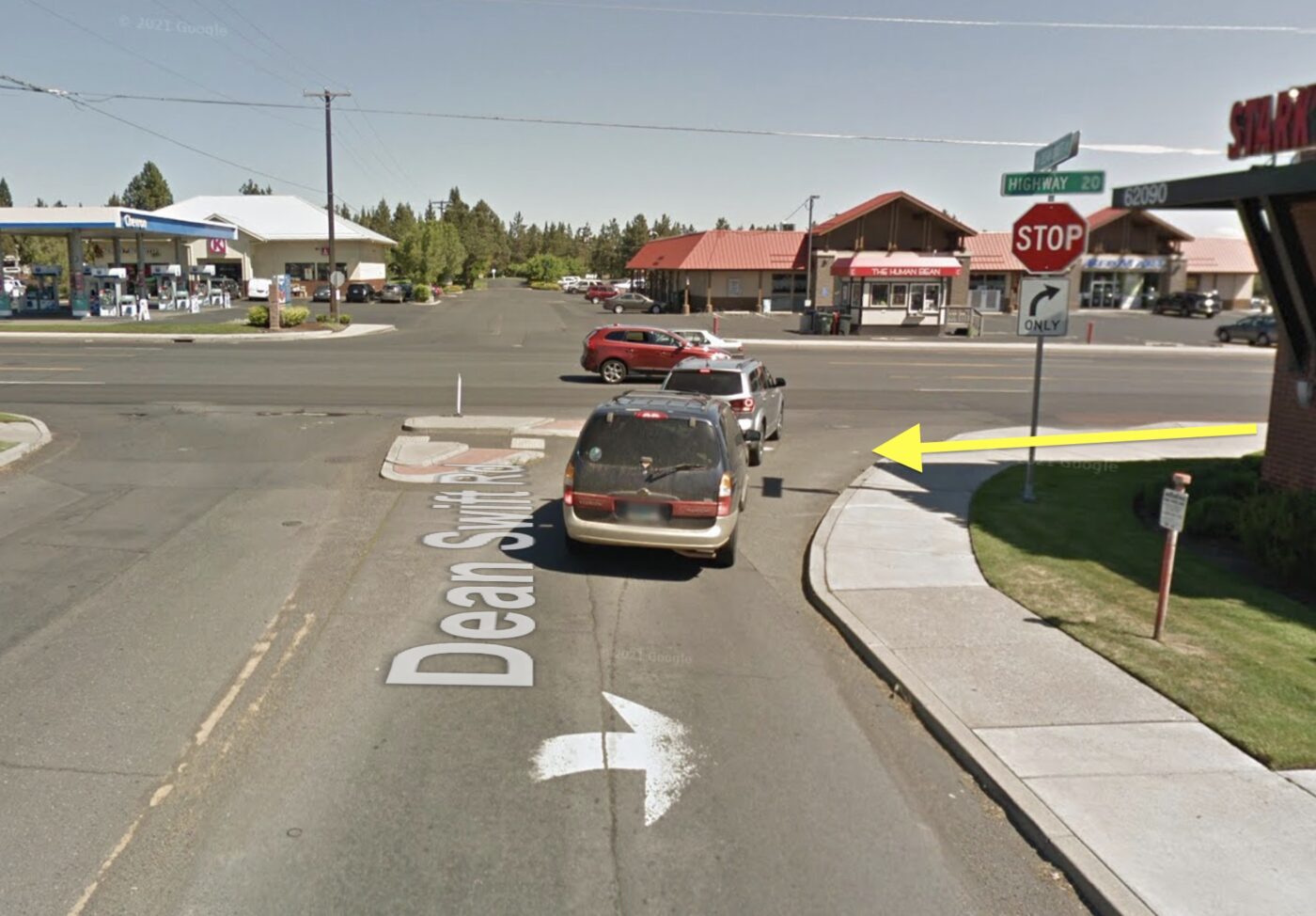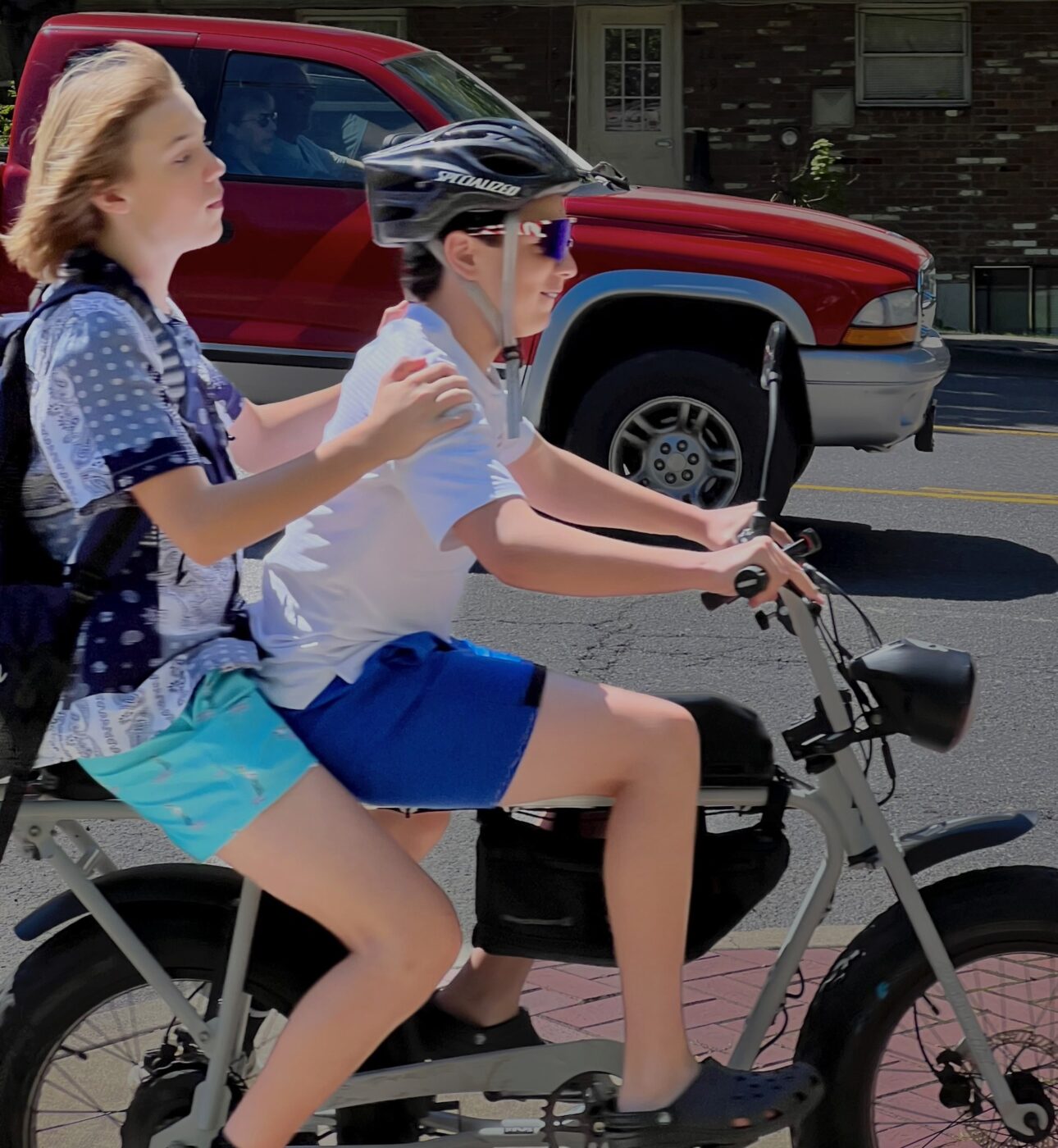About one year ago, we shared a guest article from Hood River cycling advocate Megan Ramey. In Dawn of the throttle kids, Ramey laid out her take on a phenomenon in Oregon cities where throngs of tweens and teens are taking to electric bikes.
“All it’s going to take to have this conversation explode,” would be a high profile crash, Ramey wrote. “If it happens with someone who is underage riding an e-bike, the media frenzy would be harsh. We could see overly restrictive laws passed, police changing their enforcement stance, and a general public backlash that sets bike advocacy back decades. As always, it’s best to get ahead of the issue and create these laws in advance, and not in reaction to a tragedy.”
I’m sad to say that 11 months later, a 15-year-old riding an e-bike was killed in a collision with a car driver. It happened in Bend June 17th, and the response has been almost exactly what Ramey predicted. It has sparked a big conversation about bike safety and enforcement (the victim was 15 years old and not wearing a helmet, both of which are a traffic violation). Right on cue, folks are pointing fingers at kids on bikes and calling for mandatory licensing. On Friday, the editorial board of The Bend Bulletin called on schools and parents to step education efforts.
And just yesterday, OPB’s daily news analysis show Think Out Loud welcomed a Bend Bulletin reporter and I onto the show to talk about the issue. I encourage you to listen to the segment. Host Dave Miller posed some important questions and I hope my responses to them help direct us to the best possible outcome.
As I shared with Miller on the show (listen above or read a not-perfect transcription here), it’s very important we don’t get into the standard, knee-jerk reactions that always happen when something new bursts onto the scene. Yes we need to take action to address how these new types of bikes are being used and increase awareness of the dangers they pose when used incorrectly. But as we process this tragedy and map out next steps, we must have a healthy perspective on what’s going on here.
Folks need to less time pointing fingers and more time in front of a mirror. I’m hearing a lot of people demand “more education!”, “more enforcement!”, “more laws!” Those are lazy responses because they put the onus on someone else to do something. If we want to make streets safe for everyone, we must reflect on our own behaviors. One of the major tenets of the “safe systems” approach to traffic safety (that PBOT and many other cities are working on as part of their vision zero goal) is that our streets should allow people to make small errors in judgment without the consequence of death.
Death is not a normal part of moving around a city. If you think it is, then consider this question: Which one of your loved ones are you willing to sacrifice to that belief?


We also can’t forget that our transportation system and our society on the whole is very car-centric. Everything outside of a car is an outsider, an interloper, the “other.” That strong bias often blinds us from good decision-making, especially when emotions are high following a tragedy.
I’m also concerned that not enough folks in Bend are talking about the role of road design. Just look where this fatal collision happened (above): A very dangerous urban highway and a side street built for getting onto it with as much ease and speed as possible. That wide turning radius is akin to a freeway onramp and should never exist in this type of context. And many people are questioning the teen’s decision to ride on the sidewalk; but would you ride in that bike lane? Do we really expect a bike rider to cross a five-lane arterial twice just to get to their destination?
Riding on the sidewalk in the opposition direction of road traffic was likely the safest choice they could have made given the alternatives.
And speaking of alternatives… What if all these kids lost their love of bikes? How would they get around instead? As folks like Ramey (who leads Safe Routes to School programs) and other parents of tweens and teens know all too well, it’s not easy to get them out of cars and away from their video games. So let’s be careful how we respond to this tragedy. Let’s embrace these bikes, and not let our penchant for finger-wagging and othering squander this opportunity to get kids outside.


